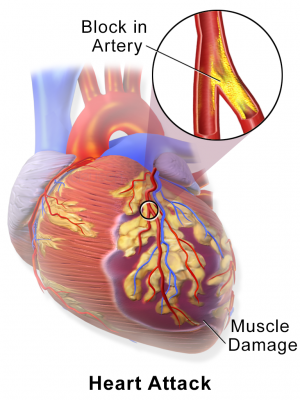Heart attack patients with cardiogenic shock fair well 60 days post-discharge

Heart attack patients who experience cardiogenic shock have a higher risk of death or rehospitalization than non-shock patients in the first 60 days post-discharge, but by the end of the first year, the gap between the two groups narrows, according to a study published today in the Journal of the American College of Cardiology.
Cardiogenic shock is low blood pressure that lasts for more than 30 minutes, often requiring the use of mechanical devices to sustain it at a safe level. The condition results in inadequate circulation of blood throughout the body.
Using data from the American College of Cardiology's National Cardiovascular Data Registry's ACTION Registry-GWTG linked with Centers for Medicare & Medicaid Services claims data, researchers examined records from 112,561 heart attack patients treated at 677 U.S. hospitals between January 2007 and September 2012. Of this group, almost 5 percent experienced cardiogenic shock during the initial hospitalization. These patients were younger than non-cardiogenic shock patients and were less likely to have had a previous heart attack, angioplasty, or coronary artery bypass graft surgery.
Researchers found that at 60 days, almost 34 percent of shock patients were rehospitalized or had died, compared with about 25 percent of non-shock patients. At the one-year mark, however, the difference was not as great: about 59 percent of shock patients were rehospitalized or had died, compared with about 52 percent of patients without shock.
After adjusting for patient characteristics such as age and gender; comorbid conditions, including high blood pressure, high cholesterol, and chronic lung disease; hospital region and size; and in-hospital events and interventions, the study demonstrated that patients who survive to 60 days have similar outcomes, regardless of shock status. For both groups, factors associated with one-year mortality include older age, discharge to a skilled nursing facility, and the number of hospitalizations in the year before the heart attack.
Rashmee Shah, M.D., the study's lead author and assistant professor of medicine at the University of Utah in Salt Lake City, noted that since outcomes between shock and non-shock patients were similar after 60 days, "there is a need to address the vulnerable immediate post-hospital period." She said that "future investigations should identify reasons for this pattern so that interventions could be tailored to improve early survival and identify the sickest patients, who may be better served with palliative care or hospice."
"We have to better understand this pattern of early mortality versus late survivorship," said Valentin Fuster, M.D., Ph.D., JACC editor-in-chief. "We need to better understand the mechanism, in order to possibly convert these early mortality rates."
In an accompanying editorial, Adnan Kastrati, M.D., professor of medicine at the German Heart Centre in the state of Bavaria, said the findings support the theory that early survival is determined predominately by the extent of damaged muscle, while late survival is related to lower baseline risk. He noted that high mortality rates for shock patients should "motivate us to search for potentially modifiable factors that may lead to improved outcomes." He suggested further investigation of the best way to address multivessel coronary artery disease and the optimal strategy for reversing cardiogenic shock.
Concurring with Shah, Kastrati added that the study "should increase awareness of the importance of close medical surveillance of this population in the immediate post-hospital discharge period."
















